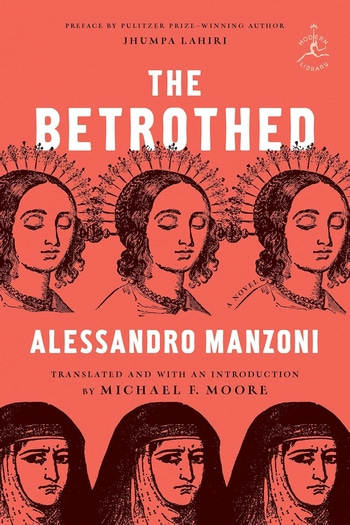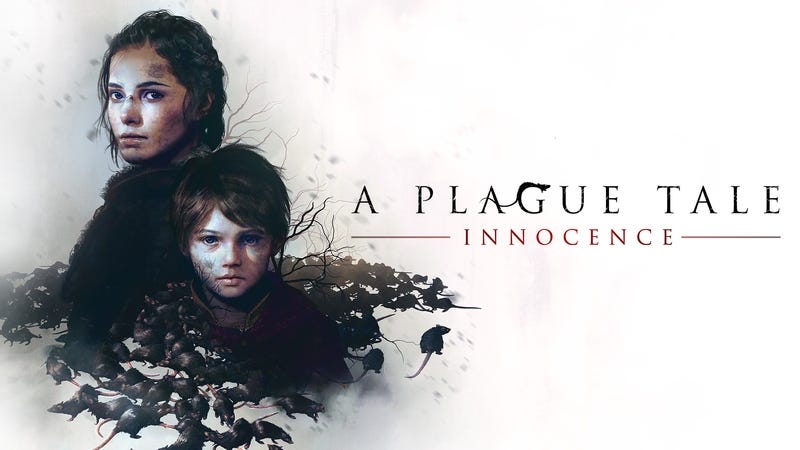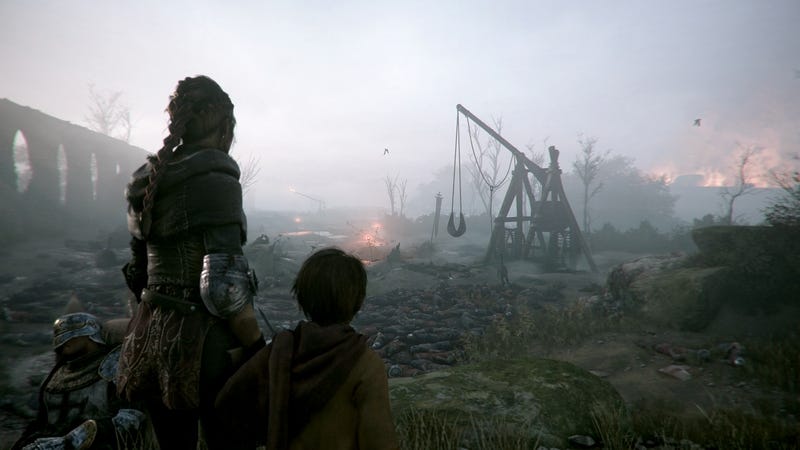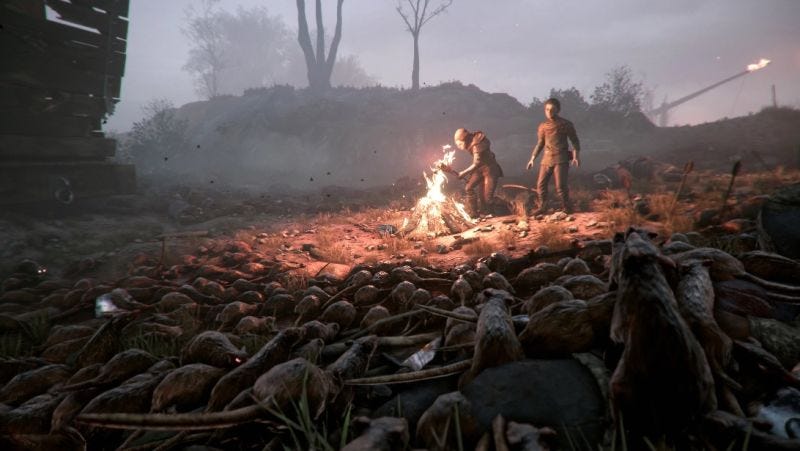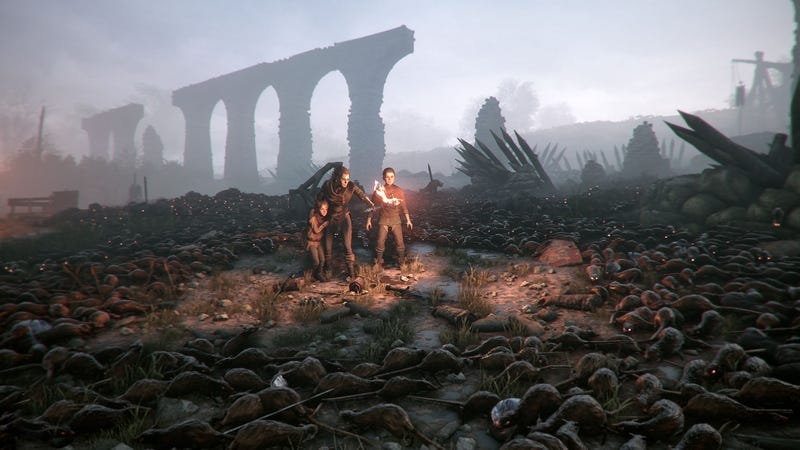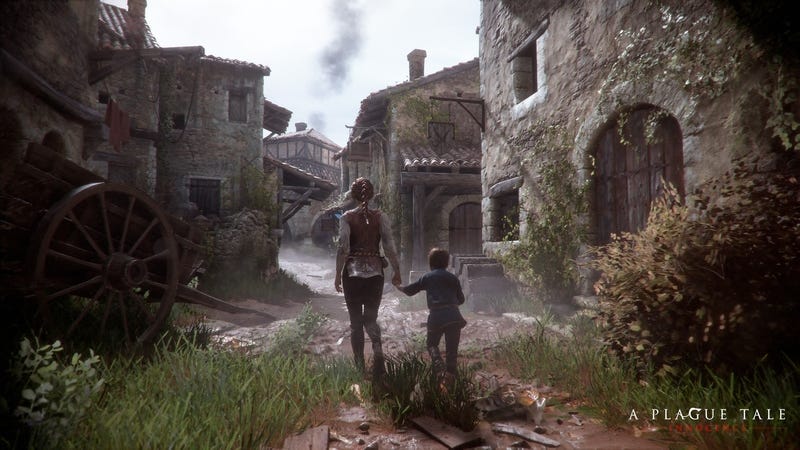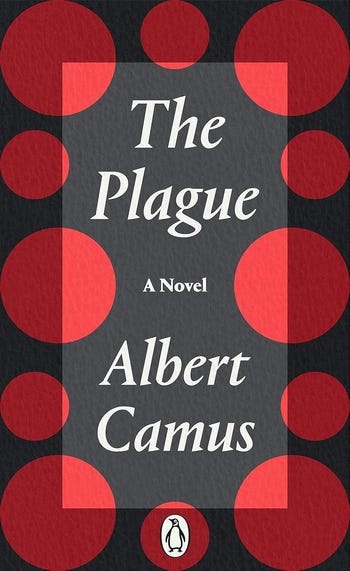A Plague Tale, Albert Camus, and The Betrothed
A mouse can solve a maze or take care of its puppies. Sometimes it works as a Disney star. Trouble is had only when mice are grouped together in a nest. #literature #videogame
Welcome back to Artcade, more than just a newsletter—it’s a hamster running in a wheel and having a blast. I wonder why hamsters are cute and sewer rats are not. Is it a matter of appearance? Does it depend on where they live? Is there perhaps a bias against rats that grow beyond a certain size? Whatever the problem may be, I remember that when I was a kid, my parents solved it in a very simple way for my birthday: they gave me a goldfish.
Before we get started, a quick note: the images of A Plague Tale: Innocence are taken from the game’s official press kit. Because sometimes even screenshots can play tricks on you. And now... enjoy the read!
In Italy, we study The Betrothed in school. This means that it is one of the most hated books among people under 20. Then, possibly because it’s actually a good book, as adults everyone seems to speak highly of it.
In one of its most famous passages, long before The Last of Us or The Walking Dead, Manzoni shatters the world of his characters by making them live through the nightmare of an epidemic. No zombies, though. Back then, rats were enough.
“You had it, too, Father, unless I’m mistaken.”
“Yes, I did! A wicked abomination it was. It’s a miracle I’m still alive. Look at the shape it left me in!”
[…]
“Tell me, how many people have died?”
“Ach!” exclaimed Don Abbondio. And starting with Perpetua, he went down a list of individuals and whole families. Renzo had unfortunately been expecting such news, but to hear the names of so many people he knew, the names of friends, of relatives, overwhelmed him with grief. With his head lowered, he kept exclaiming, “Poor boy!” “Poor girl!” “Poor things!”
Alessandro Manzoni (2022) [1825-1827] The Betrothed: A Novel [I promessi sposi] [Literature] [Historical novel] Penguin Random House LLC, New York.
Video games have evolved by leaps and bounds. The number of pixels displayed on the screen has increased from just a few to 4K and beyond. Some of you may remember the time when sound was just a simple beep. We used to count the number of triangles too. Really, we’d read phrases like “thousands of triangles” and then “millions of triangles” in magazines. Now they don’t even bother counting them anymore. Has anyone ever counted the rats?
A Plague Tale: Innocence is definitely a milestone in terms of the number of mice. I remember there was one in Mappy. Almost forty years later, here we are with thousands of rats. That seems like an important technological achievement. If you want to make a game about a plague, you need a lot of them, and here they seem like an endless sea teeming with tails.
Oh, maybe you’ve noticed, they also have glowing eyes—a nice touch to make them even creepier. Don’t be fooled by the game’s setting, which sometimes looks so peaceful. There are no cute hamsters here, nor goldfish either.
Asobo Studio (2019) A Plague Tale: Innocence [Video game] [Action-stealth] [11 Hours] (Windows) [PlayStation 4/5, Xbox One/Series X/S, Nintendo Switch] Focus Home Interactive
In this episode, I couldn't help but mention The Plague by Albert Camus. As you might have guessed from the book’s title, the author doesn’t mess around when it comes to the bubonic plague. The entire story is set in Oran, Algeria, and tells of the outbreak of an epidemic through a cast of unforgettable characters. And of course, there are a lot of rats.
An order was given to the rodent control service to collect the dead rats every morning at dawn. When the collection was over, two of the service’s vans should take the animals to the waste incineration plant to have them burnt.
Despite this, in the days that followed the situation got worse. The number of rodents picked up continued to increase and the harvest was greater morning by morning. After the fourth day the rats started to emerge in groups to die. They came up from basements and cubby-holes, cellars and drains, in long swaying lines; they staggered in the light, collapsed and died, right next to people. At night, in corridors and side-streets, one could clearly hear the tiny squeaks as they expired.[…]
‘In town, a tram was stopped today because they found a dead rat on it; no one knew where it came from. Two or three women got off. The rat was thrown out and the tram drove away.
‘In the hotel, the night porter, who is a reliable sort, told me that he was expecting something bad to come of all these rats. “When the rats leave the ship…” I replied that this was true in the case of ships, but that it had never been proved bad where towns were concerned. But he remains convinced. I asked him what misfortune he thought we should expect. He didn’t know, since misfortune is impossible to predict […].
Albert Camus (2020) [1947] The Plague [La peste] [Literature] [Novel] Penguin Books Ltd.
Information Desk:
A Plague Tale: Innocence got a sequel called A Plague Tale: Requiem released for Ps5 and Xbox Series X/S (currently included on Gamepass).
Albert Camus won the Nobel Prize in Literature in 1957. In his acceptance speech, he spoke of freedom, justice, and a generation that had to build its own “art of living in times of catastrophe.” That could be useful now, too.
Ever wondered what Mappy is? A game about a mouse, of course.
My last two coins
For about fifteen thousand years, rats have lived where we live. They eat our supplies, but more often they feed on our waste. From Rome to New York, rats thrive close to us. Does that say something about how rats live or about how we do? Ikea built an empire of bookshelves on wood chips and sawdust. It’s worth thinking twice before you throw something away. “Waste” is an ugly word, whether in manufacturing or in relationships. Rats know that, do we?
Until next episode, ciao!


